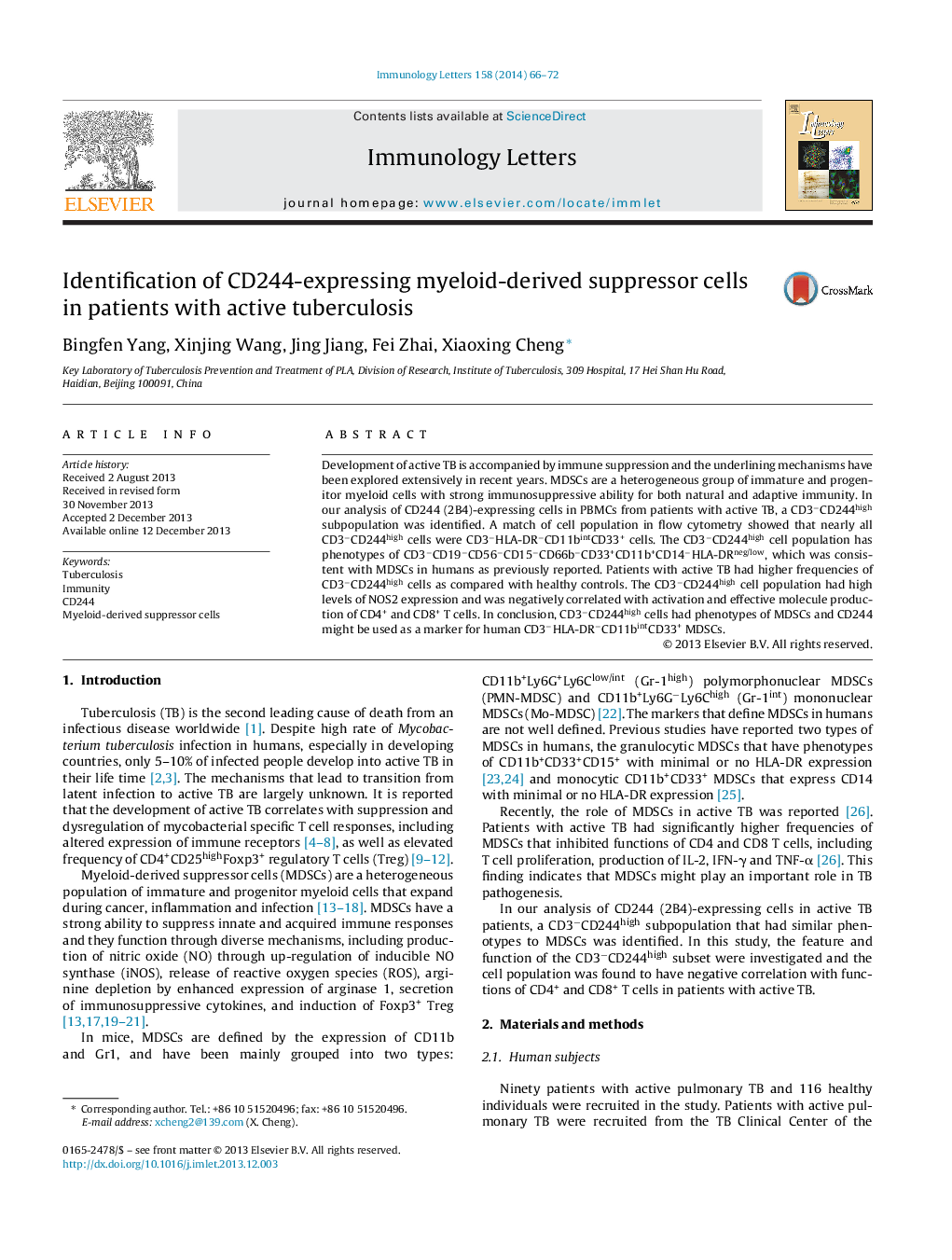| Article ID | Journal | Published Year | Pages | File Type |
|---|---|---|---|---|
| 3355447 | Immunology Letters | 2014 | 7 Pages |
•The role of MDSCs in patients with active TB has not been reported until recently.•In our analysis of CD244 (2B4)-expressing cells in PBMCs from active TB patients, a CD3−CD244high subpopulation was identified.•Flow cytometric analysis showed that nearly all CD3−CD244high cells were CD3−HLA-DR−CD11bintCD33+ cells MDSCs.•Patients with active TB had higher frequencies of CD3−CD244high cells as compared with healthy controls.•CD244 might be used as a marker for human CD3−HLA-DR−CD11bintCD33+ MDSCs.
Development of active TB is accompanied by immune suppression and the underlining mechanisms have been explored extensively in recent years. MDSCs are a heterogeneous group of immature and progenitor myeloid cells with strong immunosuppressive ability for both natural and adaptive immunity. In our analysis of CD244 (2B4)-expressing cells in PBMCs from patients with active TB, a CD3−CD244high subpopulation was identified. A match of cell population in flow cytometry showed that nearly all CD3−CD244high cells were CD3−HLA-DR−CD11bintCD33+ cells. The CD3−CD244high cell population has phenotypes of CD3−CD19−CD56−CD15−CD66b−CD33+CD11b+CD14−HLA-DRneg/low, which was consistent with MDSCs in humans as previously reported. Patients with active TB had higher frequencies of CD3−CD244high cells as compared with healthy controls. The CD3−CD244high cell population had high levels of NOS2 expression and was negatively correlated with activation and effective molecule production of CD4+ and CD8+ T cells. In conclusion, CD3−CD244high cells had phenotypes of MDSCs and CD244 might be used as a marker for human CD3−HLA-DR−CD11bintCD33+ MDSCs.
